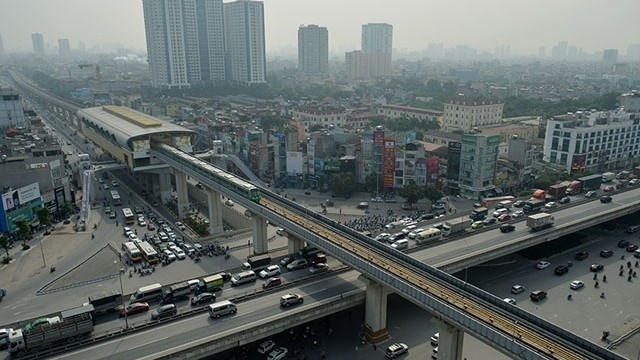Nevertheless, policy-makers have warned that, besides the positive effects, ODA and concessional loans are exposing certain shortcomings that could cause Vietnam to fall into a trap of debt.
High rates, slow disbursement
The largest shortcomings to ODA management and use during the 2016-2017 period are high interest rates, a shortage of counterpart funding, total cost overruns and changes in disbursement procedures, which make the use of ODA in many projects ineffective.
According to the Ministry of Planning and Investment (MPI), Vietnam graduated from the World Bank (WB)’s International Development Association in July 2017 and is expected to graduate from the Asian Development Bank (ADB)’s Asian Development Fund from January 2019.
Therefore Vietnam will have to begin borrowing at higher costs and with shorter grace periods. Instead of cheap loans from the WB and the ADB, Vietnam will need to secure loans from the International Bank for Reconstruction and Development with interest rates of 3-4% on concessional loans and 3.51-5.1% on ordinary loans, depending on the terms of the loans.
For bilateral donors, the interest rates on ODA provided by the Republic of Korea range from 0% to 2% and Indian loans average 1.75%. For Japan, the Ministry of Finance informed that, from October 2017, the lending rates would rise from 1.2% to 1.5%, coupled with other fees. The rates on loans for human resources development, education, healthcare, environmental protection, vocational training and climate change response also rose from 0.3% to 1%.
Japan has also imposed strict conditions on ODA recipients, such as tax policies for Japanese contractors and consultants, requirements on the origin of contractors and procurement methods to facilitate its own contractors.
Concerning disbursement, the MPI stated that the total disbursements of ODA and concessional loans during the 2016-2020 period are expected to reach US$26-30 billion, equivalent to approximately US$5-6 billion per year. But in fact, the total amount disbursed was just US$3.7 billion in 2016 and US$3.6 billion in 2017.
Such a slow disbursement rate was due to reasons which have accumulated from the previous period but have yet to be resolved completely, such as a lack of counterpart funding, slow site clearance and compensation, cost overruns, design and policy changes and the poor capacity of project management or contractors.
It is notable that cost overruns are quite common in the urban railway projects in both Hanoi and Ho Chi Minh City. For example, the cost of the Nam Thang Long - Tran Hung Dao section of Hanoi’s Line 2 rose from VND19.5 trillion to VND51.7 trillion, before being revised down to VND33.5 trillion after a re-evaluation. The cost of the Cat Linh - Ha Dong section was adjusted from VND8.7 trillion to VND47.3 trillion. Similarly in Ho Chi Minh City, the cost of the Ben Thanh - Suoi Tien section also rose from VND17.3 trillion to VND47.3 trillion.
Right to choose donors
According to, Do Thien Anh Tuan, at Fulbright University Vietnam, the country has now transitioned to a new period with different development goals, therefore the country needs to deploy a long-term vision for the post-2020 period when Vietnam has the right to select donors and projects that are beneficial to its socio-economic development.
It is necessary to carefully assess the impacts of ODA loans on the economy before accepting them. Never think that, as a borrower, Vietnam cannot negotiate on the loan conditions. In the credit market, borrowers previously went to banks to apply for loans but now banks need to look for well-performing enterprises and feasible projects and offer to lend to them.
Financial diplomacy is also the same. Vietnam now has a different position and the country can set out fixed requirements on donors such as that borrowing requirements must not come with non-financial terms. The lenders are only allowed to impose requirements on interest rates, grace periods and not requirements on the procurement and labour use.
In addition, it is necessary to increase the accountability of the agencies assigned with managing and using ODA. If the loans are scandalous or ineffective, those in leadership positions must be held accountable.
The Fulbright University lecturer stated that, although a number of ODA projects are ineffective and wasteful, Vietnam should not break off with ODA and concessional loans. In the near future, Vietnam still needs these loans and what is important is to build an overall strategy for attracting and using ODA effectively.
The MPI has proposed attracting ODA to key areas and highly important projects. It is necessary to factor in public investment sources, the borrowing limit and debt servicing coverage when attracting and using ODA. It should be guaranteed that ODA is only used for development and not for recurrent spending.
Under the Law on Public Debt Management, effective from July 1, 2018, the Ministry of Finance is the sole agency responsible for managing public debt instead of the responsibility being shared between the Ministry of Finance, the State Bank of Vietnam and the Ministry of Science and Technology as previously.
Such a consolidation will help with accountability, the reporting on the process of negotiation and signing, and the determination of the necessity of the loans. In order to enhance the effectiveness in ODA management and use, ODA recipients must be capable of preparing projects in a comprehensive and transparent manner and be able to ask for opinions from the agencies and ministries concerned in order to have adequate information to discuss with donors on the necessity of projects.
Vietnam needs overall strategy to attract, manage and use ODA
After 20 years of receiving a fairly large and steady flow of official development assistance (ODA) from international donors, the ratio of ODA to Vietnam’s total income is falling and currently accounts for just under 2% of the GDP.

|
| Cost overruns are relatively common to urban rail projects in Hanoi and Ho Chi Minh City. |















